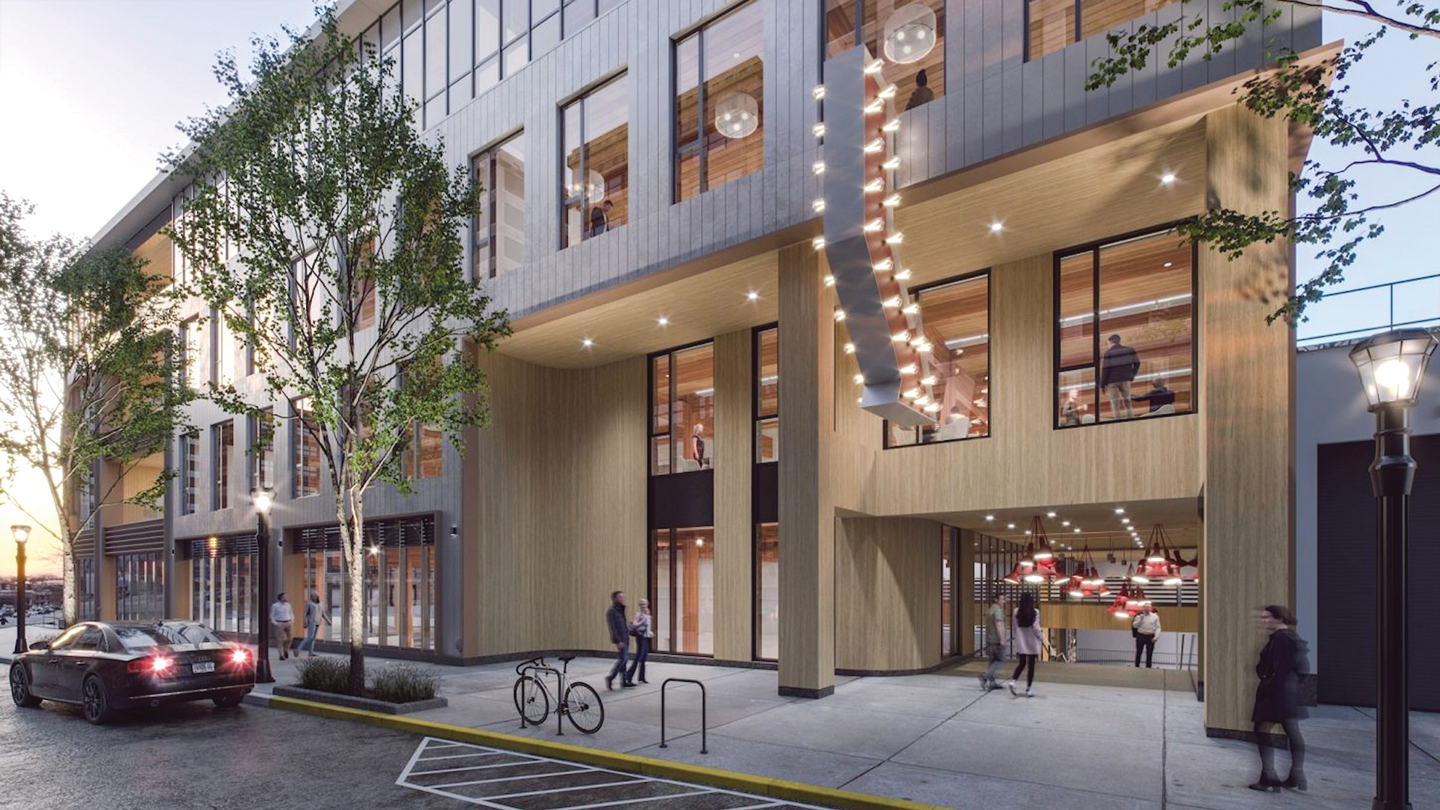
Seedlings to Solutions: Single-source Mass Timber Takes Root in Atlanta
619 Ponce is part of Georgia’s efforts to boost sustainable building practices.
Last year, Jamestown, a global design-focused real estate investment and management firm, received the results of a surveillance audit of its timberland management in five states: Alabama, Georgia, New York, Pennsylvania and Indiana. The company holds a certificate demonstrating that its practices meet the Sustainable Forestry Initiative’s forest management standard, which promotes sustainable forestry practices based on 13 principles, 17 objectives, 41 performance measures and 141 indicators. These practices include measures to help protect water quality, biodiversity, wildlife habitat, species at risk, and forests with exceptional conservation value. Accredited third-party certification bodies conduct regular audits, and the 2023 audit, by an experienced forester with Bureau Veritas North America, didn’t find any nonconformances.
Almost as an afterthought, the auditor commented at the end of the report, under Notable Practices: “Jamestown is promoting the use of sustainably managed wood to construct mass timber buildings. The company used wood from its own sustainably managed forest to build a mixed-use building in downtown Atlanta. This represents a commendable effort to promote sustainable forestry.”
The building, 619 Ponce, named for its location on Ponce de Leon Avenue in Atlanta, will be the first locally grown, locally sourced mass timber building in the U.S. Southeast. It is being built using cross-laminated timber (CLT) panels, glulam beams and columns made in part from wood grown on Jamestown’s Georgia timberland. The four-story building was designed with a focus on sustainability and wellness, and to achieve net-zero operational carbon, LEED core and shell certification, and Fitwel certification. Jamestown aims to leverage best practices for material specification, including carbon reduction and local sourcing of materials from within 100 miles where possible. When completed in mid-2024, it is expected to have 25,000 square feet of retail and 85,000 square feet of office space. Pottery Barn, the U.S.-based home furnishings retailer, will occupy the 18,000-square-foot ground floor.
The building will be the newest element of Jamestown’s Ponce City Market, a mixed-use development in Atlanta with retail anchors, restaurants, a food hall, boutiques, office space and residential units. The market is one of the most popular destinations in Atlanta, with more than 3.5 million people visiting annually.
A Focus on Mass Timber
Jamestown believes mass timber is the future of sustainable development, especially if the timber is locally sourced. 619 Ponce is meant to demonstrate to developers and designers that mass timber construction in the U.S. is possible. The project is a centerpiece of a “mass timber blueprint” awareness campaign under development by the Georgia Forestry Foundation (GFF) and its partners, including the Atlanta and Georgia chapters of the American Institute of Architects, the U.S. Forest Service and WoodWorks-Wood Products Council. The aim of the campaign, called Seedlings to Solutions, is to “tell the story of mass timber in Georgia, from tree planting to building.”
As a “forest to foundation” project that shines a light on a homegrown mass timber building, 619 Ponce may influence not only developers, architects, engineers and construction companies but also a public increasingly interested in locally sourced, environmentally friendly products and green buildings.
The 619 Ponce Mass Timber Supply Chain
If 619 Ponce is a unique and interesting building, so is the supply chain that brought the mass timber to the site. For a company with a significant investment in real estate and timberland, it’s no surprise that Jamestown is interested in using mass timber products. But Troy Harris, managing director of timberland and innovative wood products at Jamestown, was surprised by bids for the construction of the building.
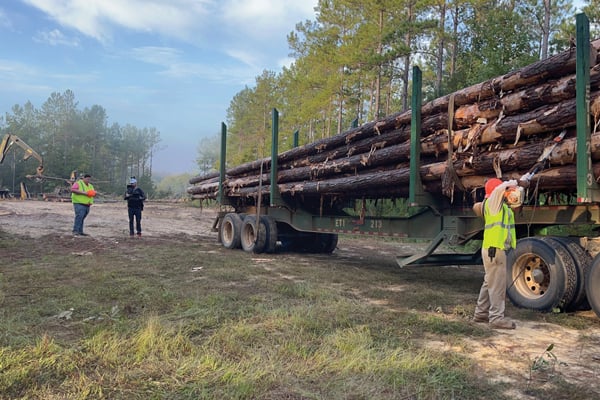
Logs from Jamestown Timberland’s property on the way to Georgia-Pacific’s lumber mill in Albany, Georgia. Jamestown LP
“It was actually going to be less expensive to source the mass timber panels and beams from Austria than from the U.S. Being a timber landowner in Georgia, and Georgia being the No. 1 forestry state in the nation, we believed that was unacceptable,” he said.
Harris met with executives of Georgia-Pacific (GP), which also is headquartered in Atlanta.
As Harris explained, “I said, ‘We’re building a mass timber building in Georgia, and it should be made out of Georgia lumber. You have a mill in Albany, Georgia, and we have forestland that supplies wood to your mill. What if we partnered in a way that made this price-competitive with Austria?’ They agreed very quickly.” GP holds a Sustainable Forestry Initiative fiber sourcing certificate for its Albany mill.
Harris then approached SmartLam North America, which has a mass timber production facility in Dothan, Alabama, less than two hours from Albany. It also has a production facility in Columbia Falls, Montana. Both facilities have Sustainable Forestry Initiative chain of custody certificates. After a planned expansion, the SmartLam facility in Montana will be the largest mass timber facility in the U.S., according to the company.
Harris wondered whether the 619 Ponce project could have a single timber source and could show exactly where this wood came from, similar to the farm-to-table movement. “If we can do this,” Harris said, “we’d create an amazing story for mass timber.” SmartLam agreed and joined the project.
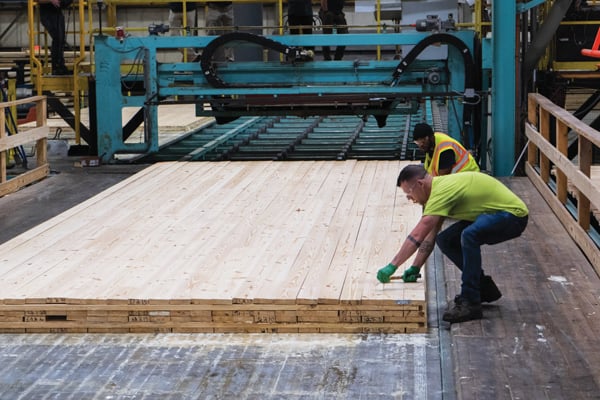
Workers at SmartLam North America’s production facility in Dothan, Alabama, prepare a mass timber panel for 619 Ponce. Jamestown LP
Jamestown already had two contracts in place to provide timber from parcels south of Columbus, Georgia, to the GP mill in Albany.
“We worked with Kim Woodall, one of the few women logging company owners in the Southeast,” Harris said.
Woodall delivered the logs to the mill in Albany, and GP agreed to process them all together — something most mills rarely do — during a single night shift. And SmartLam agreed to use only the Jamestown lumber in manufacturing the mass timber elements of 619 Ponce, making it Georgia’s first and only locally grown mass timber building.
Seedlings to Solutions: A Mass Timber Blueprint Project
GFF was founded in 1989 to support the long-term sustainability of the state’s 22 million acres of working forests. In recent years, GFF has devoted much of its energies to promoting and supporting the mass timber market by reaching out to the architecture, engineering and construction sector, key policymakers and the public.
“At the highest level, we are trying to increase awareness and understanding of mass timber and its sustainability benefits, and especially tying it back to sustainable forest management,” said GFF Vice President Nick DiLuzio. “We’ve hosted field trips to let people see mass timber structures. It’s one thing to hear about it, but it’s another to see mass timber buildings.”
Large mass timber buildings came to Atlanta in 2019 with the opening of T3 West Midtown, a seven-story, 205,000-square-foot structure developed by Hines, with StructureCraft doing the mass timber work. The building includes five floors of mass timber above a concrete podium; the five floors are leased commercial office space.
“T3 is a great example of a timber building. It gave us something tangible that people could actually walk into and get the experience of being surrounded by wood,” DiLuzio said. “But the wood was sourced from Europe. In just about every tour I’ve given in that building, people ask where the wood came from, and I have to tell them that the lumber was shipped from Europe to Canada, where the mass timber components were made, and then shipped to Atlanta. They wonder why it wasn’t sourced from the U.S., and I agree. There’s no reason we shouldn’t be growing our own buildings. We just need the supply chain in our region to catch up.”
GFF’s Seedlings to Solutions initiative is aimed at catching up. GFF lists four ways that the initiative unites its mass timber outreach and education:
- A documentary video series depicts the 619 Ponce supply chain from the forest to the finished structure.
- A portable mass timber “pop-up” structure with interpretive information has been installed at Ponce City Market.
- A permanent mass timber pavilion, Forest at Ponce City Market, is designed to be an attractive public event space with information about sustainable forestry and mass timber structures.
- The Mass Timber Acceleration Technical Assistance Program will help with projects.
GFF received a $199,100 U.S. Department of Agriculture Forest Service Wood Innovations Grant to support the pavilion’s development. It also received a $10,000 Community Grant from the Sustainable Forestry Initiative to help with the design and construction of the pavilion.
Technical Assistance for Architects and Developers
GFF’s Mass Timber Acceleration Technical Assistance Program, or mass timber accelerator, as DiLuzio calls it, was formally launched at the end of 2023.
“Architects or developers who are in the early stages of a mass timber project can apply to participate in the accelerator program,” DiLuzio explained. “If they are accepted, they receive a $25,000 cash award to help offset some of the time involved in participating. They will also receive high-level technical expertise from WoodWorks, including two design charrettes with the project team. With the funding we have, we can support up to eight projects.”
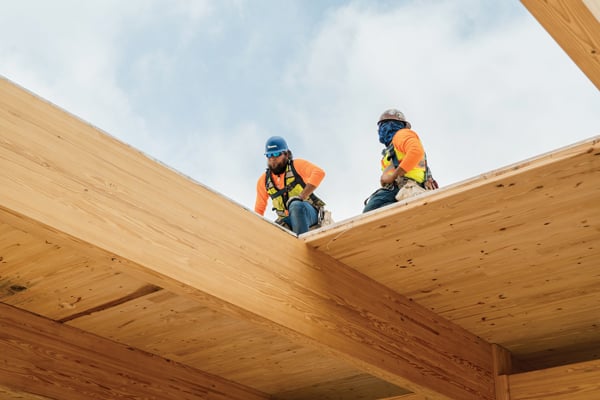
Assembling 619 Ponce’s mass timber superstructure. Jamestown LP
The WoodWorks team will work with a developer’s existing concepts to determine the best options for incorporating mass timber in the building. WoodWorks also will produce a comparison of the costs of using traditional materials such as concrete and steel versus using mass timber and provide an analysis of the carbon benefits of using mass timber in place of traditional materials.
CLT Advantages
The building at 619 Ponce is the first in the state to register carbon credits for the embodied carbon in the structure with the Georgia Carbon Sequestration Registry. The voluntary program provides forest landowners, municipalities, and public and private entities with an official mechanism for the development, documentation and reporting of carbon sequestration projects undertaken in Georgia.
“Builders and designers in Georgia who use timber products can calculate the difference between using mass timber and concrete and/or steel, and the net difference of the embodied carbon in that project can be placed on the registry,” Harris said. “Timber buildings are carbon vaults. The credits in the registry can be sold to a company that’s looking to offset its carbon dioxide emissions, whether it’s an airline or a manufacturer. Tenants can use the credits to offset their carbon footprints. Or the owners of the building can use those credits to keep their emissions as net zero.”
Such credits can help compensate for the higher cost of using mass timber compared with concrete or steel — a premium of 10% to 15%, according to Jamestown. “That premium is due to the newness of the product and limited number of providers, but the goal is to increase suppliers and demand for the product, which should reduce the material premium,” Harris said. “We also haven’t fully realized the savings on the schedule side yet — which helps offset the premium — but as more and more contractors complete these projects and get familiar with the building material and its benefits, the more that premium should be reduced.”
According to Think Wood, T3 Minneapolis, a seven-story mass timber commercial building completed in 2016, was erected in just 2.5 months at an average of nine days per floor.
Sourcing Mass Timber
Mass timber accelerator participants won’t be required to use U.S. wood.
“We are certainly going to encourage them to use Southern yellow pine, but it probably won’t be a requirement,” DiLuzio said. “One of the challenges that we’re facing is that it’s 10% to 15% cheaper to import wood from Canada or Europe than it is to use wood from the Southeastern U.S. The developers I’ve talked to appreciate the benefit of using wood from the region they are working in, but the price differential in such projects can be huge.”
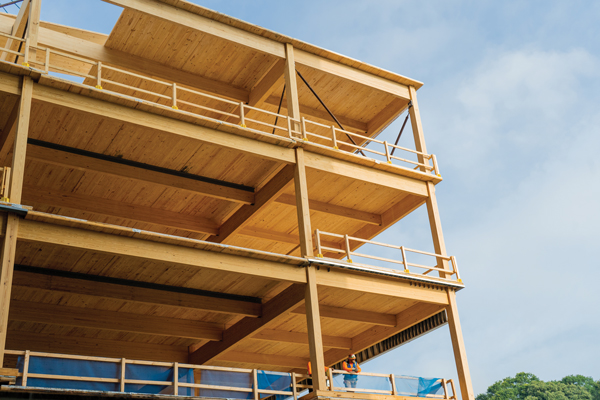
619 Ponce’s mass timber superstructure. Jamestown LP
European companies have been making and using mass timber for at least 30 years, so their supply chains are more mature than those in the U.S., DiLuzio said.
“The optimist in me says that in the next five or 10 years, as demand for mass timber continues to increase in the supply chain in the South, we’ll get to the point where we are competitive with the international markets,” he added.
According to Forisk, an industry research and consulting firm, there are 38 mass timber production facilities in the U.S. and Canada, including 24 that can produce CLT.
DiLuzio often hears from people who ask whether a substantial increase in mass timber demand will result in overharvesting of forests in the region.
“In the Southeast, the answer is no,” he said. “Southeast-wide, we actually have an oversupply of wood on the stump. Stumpage prices crashed in 2008 with the collapse of the housing market, and they haven’t really recovered since then.”
Although it may seem counterintuitive, Harris argues that to ensure the long-term sustainability of Southeastern forests, there is a need to increase harvest. Georgia grows, on average, 48% more timber than is annually harvested.
Will the stars align again for another single-source mass timber building using Jamestown’s timber?
“We want to do another project, and I hope we can,” Harris said. “The reality is that single sourcing like this is very hard. We had the right timberland, in the right place, with the right mill, which was close enough to the SmartLam plant in Dothan. We really want to do more mass timber projects with Southern yellow pine. Could we build with timber sourced from Georgia? Or [do] a building in Charleston, South Carolina, with timber grown in that state? Yes, absolutely. That can work in other states, too — Douglas fir in Oregon or hemlock in Maine. And I think it’s a great story to tell, even if it isn’t single-sourced — a story that says this building was made from sustainably harvested timber grown not in another country, but right here in your state.”
Steve Wilent is a freelance writer in Zigzag, Oregon. Contact him at SWilent@gmail.com.
Cross-Laminated Timber Fast FactsCompared with other types of hardwood, CLT is more stable and its mechanical properties less variable.
|
Mass Timber Standing TallThe Ascent MKE building in Milwaukee stands as the world’s tallest mass timber building at 25 stories and 284 feet. Revisit Development’s Summer 2021 cover story on this unique project, “How Ascent Is Pushing Mass Timber to New Heights,” at naiop.org/21timber. |
RELATED ARTICLES YOU MAY LIKE

Navigating the AI Revolution: A Blueprint for Real Estate Executives
While artificial intelligence reshapes industries globally, commercial real estate is at a crossroads of adapting swiftly or being left behind.
Read More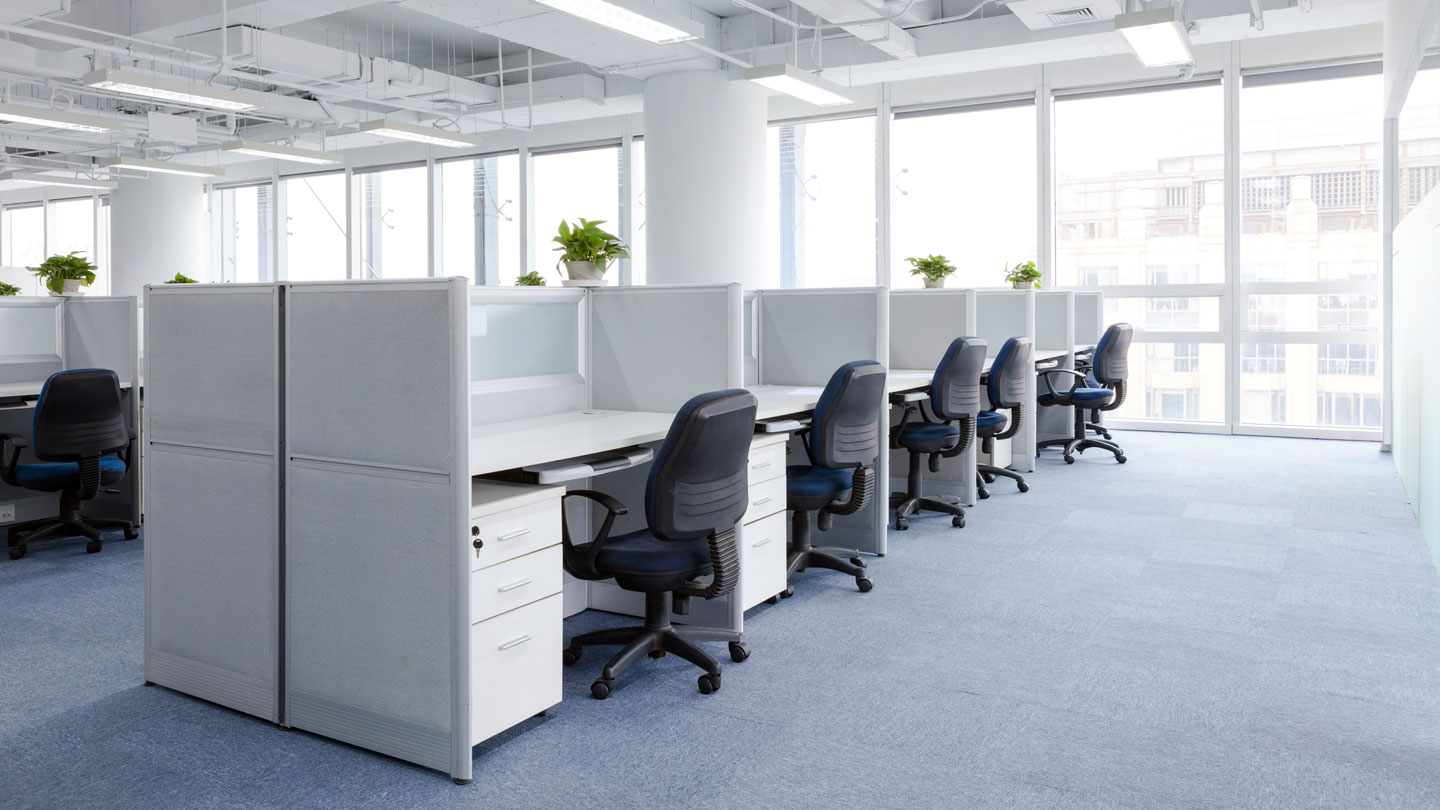
NAIOP Research Directors Discuss an Industry in Transition
At their annual meeting, research directors shared their outlooks for capital markets, office, retail and industrial real estate.
Read More
Demand Remains High for Construction Workers
Firms with openings for craft workers report challenges in filling those positions.
Read More



